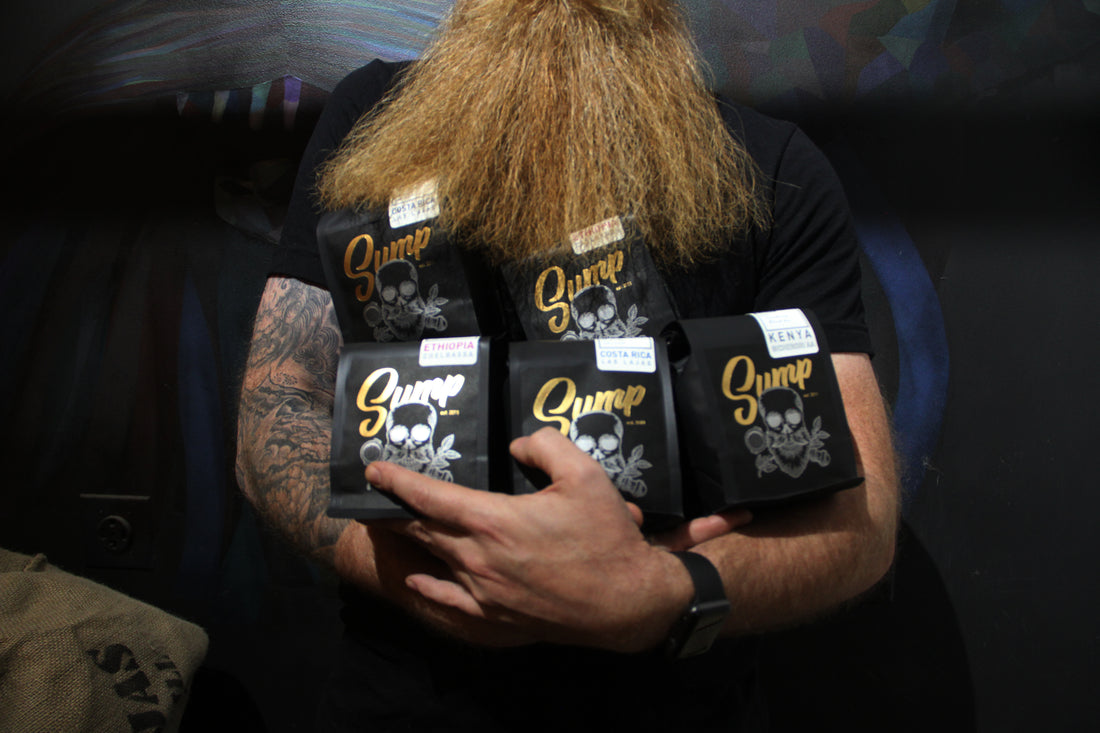
One thing that I don’t think we’ve done very well is convey from afar what it is we do. I mean from a duh level, it’s pretty clear - coffee. But what kind or style of coffee do we make or aspire to make? Or what can you expect if you order a coffee online? Fair questions.
In an effort to avoid the risk of coming across as proselytizing, a quick disclaimer. This writing is not a manifesto. This is not a line in the sand. This is not a prescription for doing coffee the truest, and thus right way. This is simply a communication on style and an approach to coffee that started as something very personal and through experimentation, and with the input of many thoughtful individuals over the years, is where we’ve parked the coffee cart for now.
How these few paragraphs catch you will obviously depend on your coffee experience to date. Thus, for some this writing is something of a ‘well obviously’ or ‘why’d you bother?’. However, we’ve received some questions and feedback recently that suggest we’ve jumped too far ahead in the plot, thus this writing.
So for those from afar, who’ve never been to our shops -what can you expect if you order a bag online or see a grinning bearded bag in a cafe around your town?
I’d like to begin the story at the source, we begin with current or in season green coffees. Which means, and by analogy, that for the same reason tomatoes you have at the end of the summer are amazing versus the ones you have in the dead of winter are not so much (if you live outside of California), also applies to green coffee. But what complicates this math is that coffee in the states is not local. The coffees we consume in the states are grown and processed thousands of miles away, then typically containerized (275 to 300 60 kg to 70 kg bags per container) and shipped to a port of entry stateside and warehoused. Also, and somewhat obviously maybe, but because of the tilt of the earth in its orbit, not all coffee growing regions produce coffee at the same time (the whole opposite season in the different hemispheres), so that means there are some regions that are being harvested and processed while other regions are just beginning to flower.
So unpacking this, what does it means for our coffees and your experience? Because we do not offer blends, at least in its most typical meaning (this statement needs its own unpacking) we roll with the origin as booked. This means we do not have a year round coffee or in a more commercial vernacular, a perennial sku. And now the avalanche that results from this fact. This means that if you love a coffee at Sump we may never have it in the shop again. And even if we are lucky enough to book a coffee year to year (like the Las Lajas coffee, 5 years running) it is rarely the same. Consider it from the perspective of a wine vintage, the affects of season to season changes -rain fall amounts, agriculture challenges, age of the plants, processing advances, timeliness of arrival at ports, shipping and port temperatures and on and on; all impact the cup. Our approach to coffee is more single estate chocolate bar, than Hersey bar. Both are made from seasonal agriculture products and subject to season to season changes and influences, but one embraces those changes (the single estate bar) and one engineers away that variability.
So in our narrative so far, we have current crop coffees, roasted and prepared as we receive them -without blending or amendment. The next plot point deals with the types of coffee we try to book and how we roast those coffees once they arrive. In general, we have some origin biases -meaning we book from some countries and origins at the exclusion of others. We also try and book coffees that are more representative of coffee as fruit-like than coffee as nut-like. This does not mean we book acidic coffees. Instead we look for coffees with a more white sugar cup than a dark or caramel sugar presentation, and that clearly articulate character and complexity. Complexity is sort of a generic catch all, but its use here refers to the ability to articulate clearly the notes and flavor identities in the cup.
After we have booked a coffee our roast style or roast niche is light. This statement is also a pretty generic catch all that requires some exposition. The most typical and popular suggested nomenclature for this style is Nordic, Scandinavian, or New England (I’ve even heard it referred to as sushi coffee). I think the best path to conveying this style is through a story that is most likely apocryphal, but illustrative nonetheless. The Boston Tea party (in New England) was a protest against taxes on British tea. During the boycott, the people of New England did not want to forego their cup of tea entirely and thus attempted to roast coffee light enough to still have a ‘tea’ like beverage. Although we are not protesting any direct colonial rule, our roasting approach is similar to this New England style. Our goal is to develop a profile for each coffee that is tea-like in its cup clarity -while still demonstrating its fruit-like nature (coffee is a seed, captured from the harvest of fruit cherries) and highlighting some degree of cup sweetness, more toward the white sugar end than a caramel or molasses end (there is sweetness in most speciality coffees -but there is typically only about 5 calories per 5 oz cup of coffee so it’s not an exaggerated sweetness). Light roasted coffee can mean many things and most modern coffee roasting is determined by a tailored roast curve or profile instead of specific start and finish temperatures or mere exterior bean color. (I sometimes think about modern roasting as something akin to the path integral formulation of quantum mechanics (it’s clearly a stretch, but it helps convey the sense of two non-identical curves with the same start and finish points , with their differing paths connecting those two end points (but also not to be discounted are differences in roasting machine architecture, air flow, drum composition, elevation, atmospheric pressure, and on and on)).
Abstracting and thumbnailing once more, the core Sump plot revolves around seasonal coffee crops, single origin presentations of those crops, no year round or year to year coffees, coffees selected from a limited subset of coffee growing regions, and all roasted light (to focus on cup clarity and sweetness -with slight compromise to cup body).
Now to tie it all back to what to expect as an online shopper, first time buyer. The beans in the bag will be blonde and dry - no oils leeching out. The coffee will be dense (and may be challenging to grind, especially if you only have a hand grinder or a conical burr grinder). Your brew recipes might also require some adjustments to obtain a proper extraction (we recommend a coffee water ratio of 1 g coffee to 14 mL of water; a typical Sump V60 recipe calls for 25 g of coffee to 350 mL (~350 g) of water) (A more traditional darker roasted coffee or classic recipe will have a coffee water ratio of 1:16 or 1:17). The resulting brew will be amber to burgundy in color versus dark and inky. In addition, the flavor and complexity of the cup will really present itself as the cup cools slightly -anywhere from 20 to 40 degrees F off the brew temperature, at which time the brew will start to become slightly cloudy as it oxidizes. And even though we do not have year round or the same year to year coffees, they will all be executed according to the foregoing ideology -seasonal, single origin, lightly roasted for cup clarity and sweetness.

